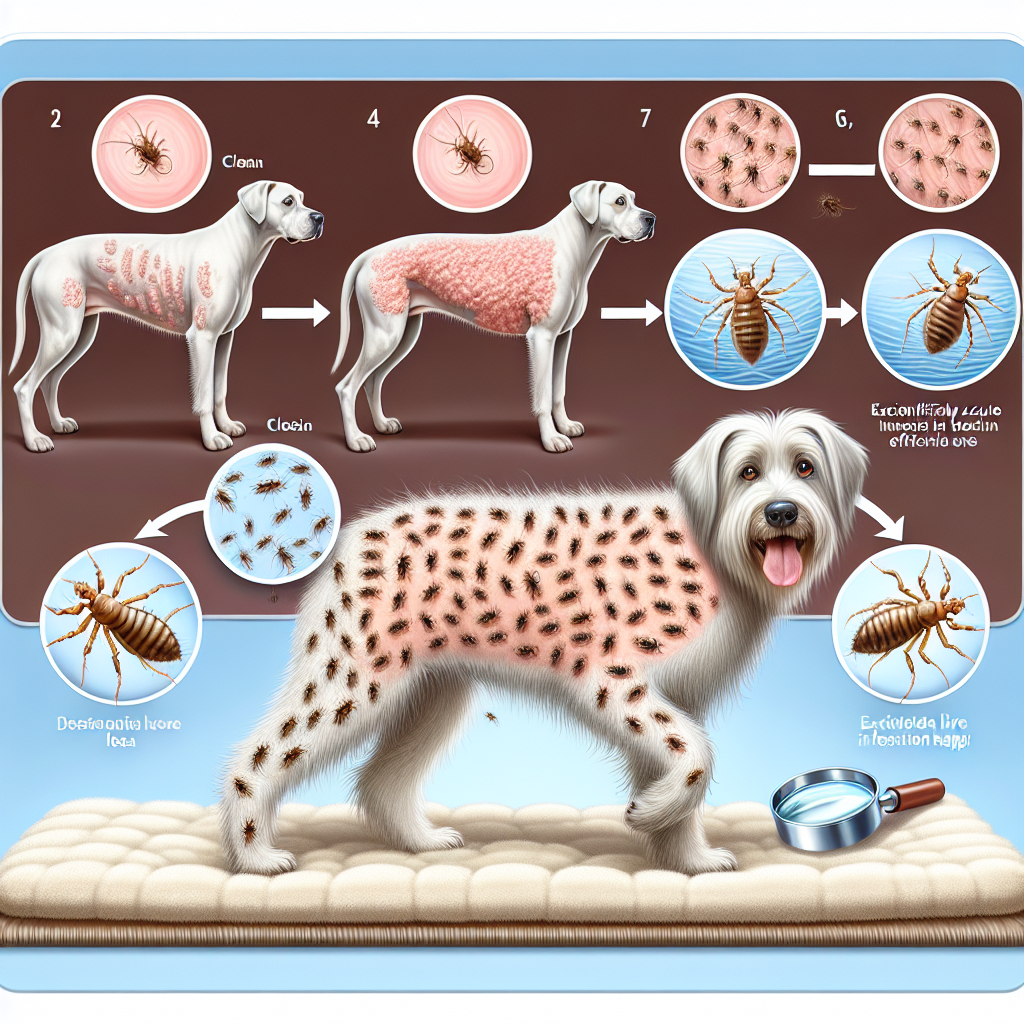===INTRO:===
When it comes to our beloved canine companions, few things cause more distress than the reality of flea infestations. Understanding how dogs become infested with fleas is crucial for pet owners who wish to protect their furry friends from these irritating pests. Fleas are not just a nuisance; they can lead to serious health issues for your dog, including skin allergies and even anemia. If you’re seeking in-depth knowledge on the lifecycle of fleas and dispelling common myths surrounding flea infestations, you’re in the right place.
The Lifecycle of Fleas: How Dogs Become Hosts
Fleas undergo a complex lifecycle that allows them to thrive in various environments. The stages include egg, larva, pupa, and adult. The female flea lays eggs on the host (often your dog), which then drop into the environment, such as carpets, bedding, and grass. Each female can lay around 20 to 30 eggs per day, leading to rapid population growth if left unchecked. Understanding this lifecycle gives pet owners insight into why fleas remain a persistent problem.
Once the eggs hatch into larvae, they feed on organic debris and flea feces, which contain undigested blood. The larval stage can last from several days to weeks, depending on environmental conditions. After this phase, the larvae spin cocoons and enter the pupal stage, where they can remain dormant for an extended period. Environmental triggers like warmth and vibration signal when it’s time for them to emerge as adults, ready to find a host, typically your dog. Recognizing these lifecycle stages is essential for effective flea control.
The adult fleas will jump onto your dog, using their strong legs to latch onto fur and skin. Once on your pet, they begin to feed on blood, causing discomfort and potentially leading to health issues if not addressed. This transition from egg to adult within a matter of weeks highlights the importance of early intervention and consistent flea prevention strategies. Regular grooming and environmental checks can significantly reduce the chances of a flea infestation taking hold.
Common Misconceptions About Flea Infestations in Dogs
Despite the widespread concern regarding fleas, many misconceptions linger among dog owners. One of the most prevalent myths is that fleas are only an issue during warm months. In reality, fleas can survive in homes year-round, particularly in climates with consistent indoor heating. Even in colder environments, fleas can thrive in protected areas within the home, meaning vigilance is necessary all year long.
Another common misconception is that a dog can only get fleas from direct contact with other animals. While direct contact can certainly lead to an infestation, fleas can also hitch a ride on various objects, including clothing, shoes, and even furniture. When visiting pet stores, parks, or friends’ homes, your dog can unwittingly carry fleas back into your living space, making it critical to implement preventive measures consistently.
Finally, many pet owners believe that a flea treatment applied once will suffice for the entire season. However, this is a dangerous assumption. Flea treatments often require regular application to remain effective, as they only target fleas in specific life stages. A comprehensive flea control program should include not just treatment for your dog, but also environmental controls and ongoing preventive measures. By debunking these myths, pet owners can take more effective steps to protect their dogs from fleas and the health risks associated with infestations.
===OUTRO:===
Understanding how dogs become infested with fleas and dispelling misconceptions surrounding flea management is essential for every dog owner. By familiarizing yourself with the lifecycle of fleas and recognizing the various ways they can invade your home, you can take proactive steps to safeguard your pet’s health. Implementing a multi-faceted approach to flea prevention and treatment will ensure your dog remains happy, healthy, and free from the discomfort that fleas bring. Don’t wait for an infestation to occur; take charge now with effective flea control solutions tailored to your dog’s needs. Explore in-depth resources, consult with your veterinarian, and engage in ongoing education to maintain a flea-free environment for your cherished companion.
Measuring Your Dog’s Height: A Comprehensive GuideUnderstanding the Lifespan of Pug Dogs: What to ExpectSigns Your Dog May Need Gland Expression: A GuideRelevant LinkRelevant LinkRelevant Link
